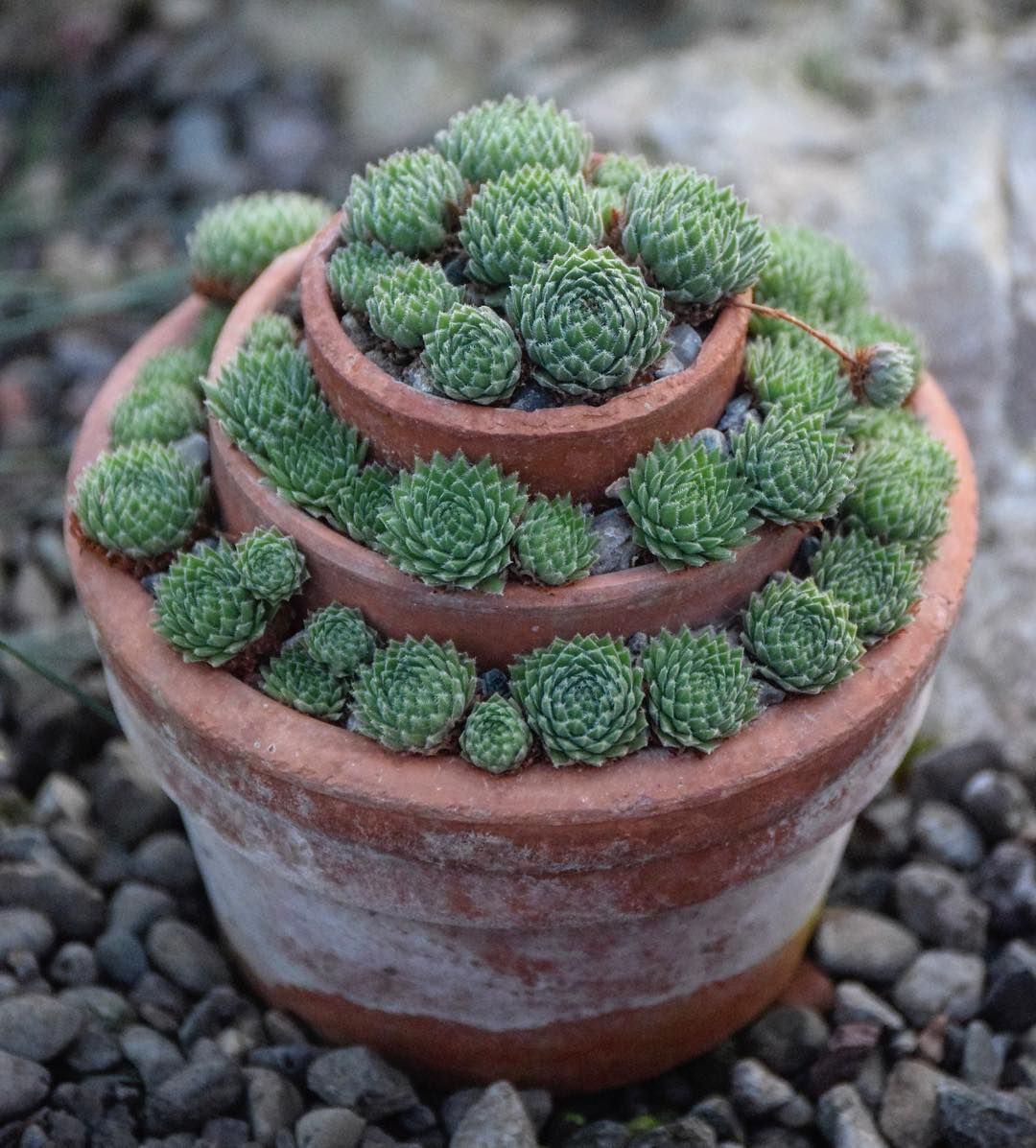
Assorted Sempervivums
Contents
- Top Tips
- Location, Water, Humidity & Fertilisation
- Dormancy Care & Annual Flowers
- Common Issues
- Origins, Temperature, Propagation, Repotting & Toxicity
Need the answer to a specific plant query? Book a 1-to-1 video call with Joe Bagley, the website's friendly author, to overcome and address your niggling problem! Available on iMessage, WhatsApp, Facebook Messenger & more.
Top Tips & Info
- Care Difficulty - Very Easy
- Although Sempervivums are predominantly an outdoor plant, you can still have fantastic success when situating one indoors. Choose a pest-free, healthy specimen from a garden centre or online store, to avoid infestations or plant-death; those with a healthy 'crown' and base are best. Sempervivums are best purchased in the spring or summer months while the plant has acclimated to the heightened temperatures, ready for your south-facing window or conservatory.
- It's mandatory to provide a bright location with several hours of sunlight a day. Those kept in deep shade or further than 50cm from a window will show signs of over-eating and soil mould. As they're hardy, non-heated conservatories, greenhouses or porches are acceptable throughout the year.
- Sempervivums must endure periods of droughts in between waters - if you're stuck with when to water it, think of the ukhouseplants' phrase of 'Drenches Between Droughts'. Be careful when watering - allowing excess moisture to sit in the cubbyholes of the crown will result in diseases like southern blight and 'heart rot'.
- Fertilise every two or three months using either a 'Cactus' or 'Houseplant' labelled feed.
- Repot every three years during the spring, using a Cactus & Succulent potting mix and the next sized pot. This is the perfect time to propagate the small offshoots that'll form at the base of the crown. Scroll down to 'Propagation' for more information!
Location & Light - 🔸🔸🔸
Place your specimen in the brightest location as possible. A few hours of sunlight will be highly beneficial for the plant, as it'll significantly reduce the risk of over-watering and root rot. Due to the genus' intolerance to low light, avoid placing one in areas where a newspaper can't be read without the use of artificial light - for example, more than a metre from a window or light source. Suitable locations are a conservatory, south-facing window, summerhouse or a sun-filled porch.
Water - 🔸
Allow all of the soil to dry out in between waters, reducing this to every four to six weeks in the colder months. Winterising your Sempervivums is essential to maintain good health; keep the plant 'ticking over' by reducing the number of irrigations to every three weeks and avoid over-fertilisation. One word of advice is never to allow excess moisture to settle either in the actual crown of the plant or underneath the pot, as both will cause southern blight or even black rot. Under-watering symptoms include drooping leaves, stunted growth, and drying leaves; these can be a range of different issues, including forgetfulness, too much sunlight, or the plant being pot-bound. Over-watering symptoms include root rot, a rotting base, or sudden plant death. Sempervivums must have sufficient light levels (at least two hours of direct sunlight a day) to counteract the chance of root rot. For more severe cases, click on this link below to learn about how to address root rot.
Humidity -
This is not a factor; however, if the Sempervivum is situated indoors, a quick hose down from time to time will reduce the number of dust particles covering its leaves.
Fertilisation - 🔸
Fertilise every two months during the growing period and every three months in the autumn & winter to replicate its dormancy period. Although a 'Houseplant' fertiliser will still do the job, we'd recommend using a specific 'Cactus' labelled feed as it'll support the vital thirteen nutrients that this species will need to grow.
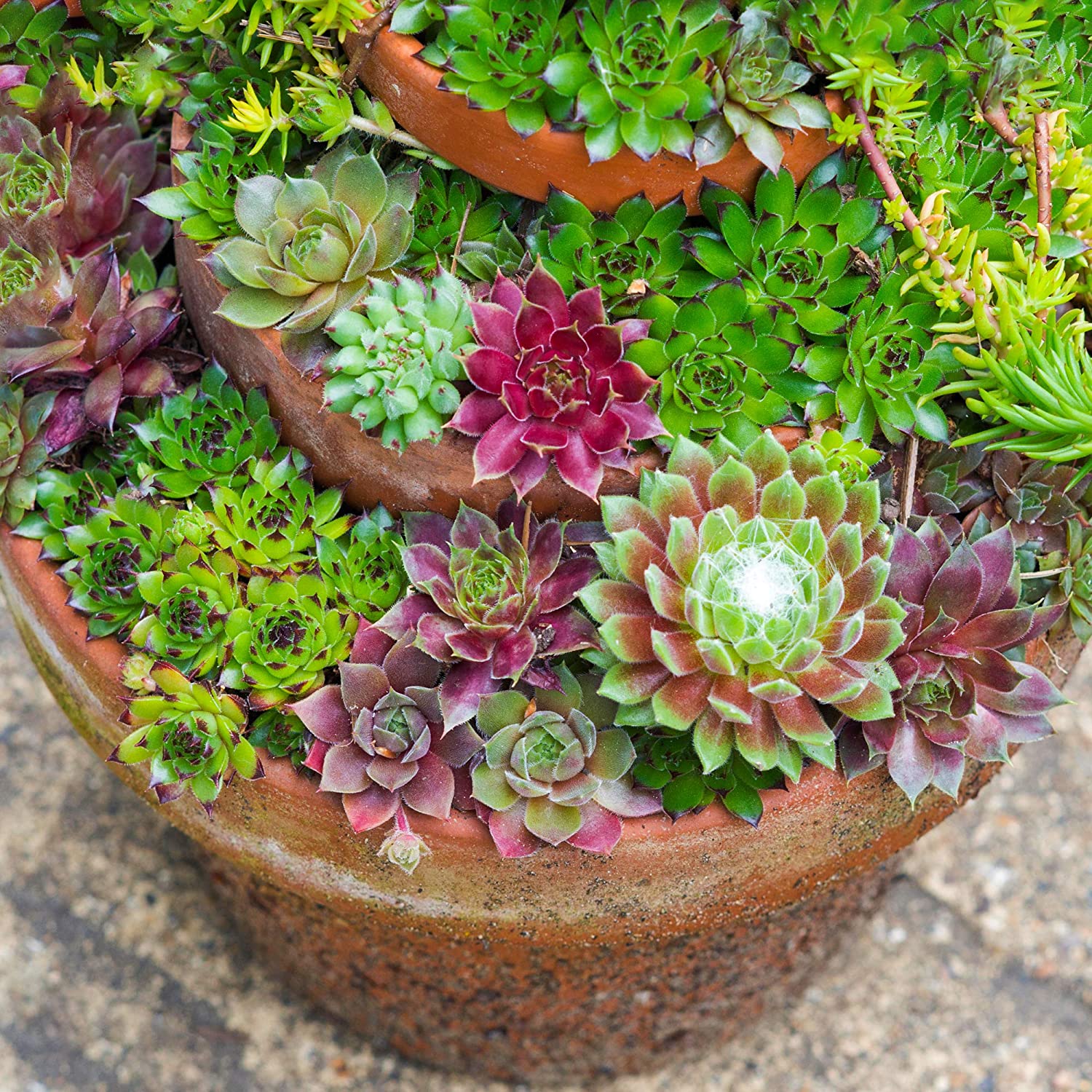 Because of their easy-natured propagation hacks, creating displays like this is quick, affordable and extremely fun! Copyright: Gardening Express.
Because of their easy-natured propagation hacks, creating displays like this is quick, affordable and extremely fun! Copyright: Gardening Express.
Dormancy Care & Annual Flowers
Provide a cool autumn and winter period around 15℃ (59℉) to reinforce its dormancy. Keep the roots pot-bound to add further stress onto the specimen, which in turn will significantly heighten the chance of flowering. Blooms will generally appear in the summer, during the active growth season. The following steps should be taken from early autumn until the end of winter.
Sunlight & Location
Be sure to provide a bright location with a few hours of direct sun. Although the winter rays won't necessarily hurt the plant, be careful not to fall in the trap of sun-scorch and severe dehydration. Avoid deep shade and the use of artificial lighting at night or locations that boast temperatures higher than 18℃ (64℉).
Hydration
Reduce waters so that ALL of the soil becomes dry for several weeks. It's essential to keep them on the drier side to life, as they'll think that hard times are ahead and therefore will need to pass its genes on to the next generation.
Occasional Feeds
During the autumn and winter, fertilisation should be performed every two months with a 'Cactus' feed. While the flowers are in development or in bloom, use a Tomato fertiliser to provide fortnightly nourishment of potassium, at monthly intervals.
Reduce Everything
This is to remind you that everything needs to be reduced - especially the watering and temperature.
Temperature
This is the most significant step; reduce the temperature down by around 5℃ compared to the summertime or place in a room that's between 8º - 15℃ (46º - 59℉). You'll be at a significant disadvantage if the ambient temperature is kept constant throughout the year, as Sempervivums will only respond in locations that have daily fluctuations of around 7℃. Never exceed the minimum temperature as it may lead to plant death or yellowed foliage at a bare minimum. If these steps are followed successfully, you could see a show of blooms in the following summer - but remember, dealing with nature may not always provide the results you'd relish!
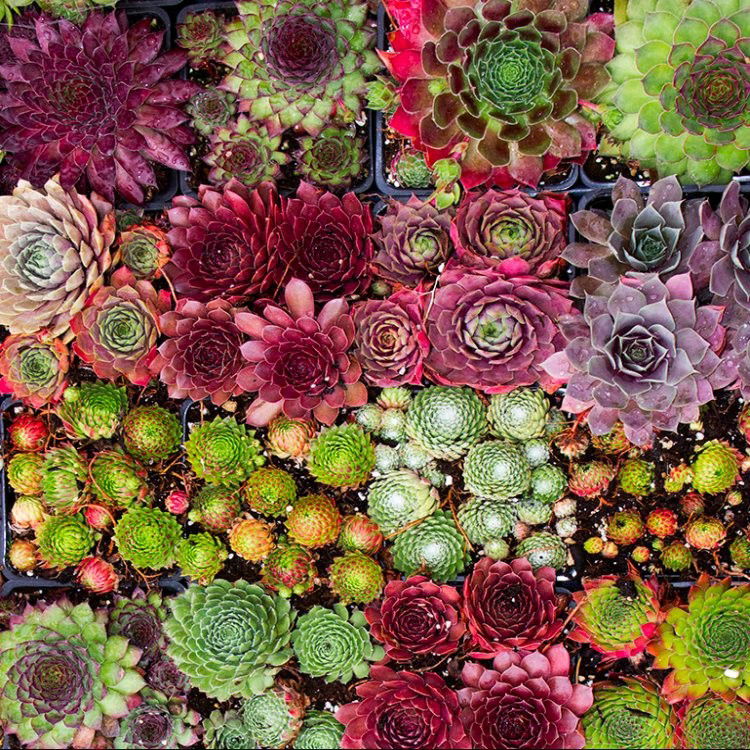 Sempervivums, like most other alpines, are very cheap to purchase from garden centres. The cost varies depending on its size, but some can be bought for as little as £2.49!
Sempervivums, like most other alpines, are very cheap to purchase from garden centres. The cost varies depending on its size, but some can be bought for as little as £2.49!
Common Issues with Sempervivums
Over-watering is the most common issue, with typical signs including a rotten crown, yellowed or shrivelled foliage and a soft base. There must be periods of droughts to replicate the habitats of the Mediterranean, as well as limiting the chance of diseases. Avoid waterlogging as there's no point fulfilling the phrase 'drenches between droughts' if the base of the pot is submerged. For more information about over-watering related issues, be sure to click on this link.
A pale centre and deformed growth are typical signs of too little light. Offer at least an hour of direct sunlight, especially in the winter months, to provide the vital nutrients that'll be converted into plant sugars.
Scorched or browned edges on the older leaves are the result of too little water and over-exposure to the sun. Although Sempervivums are a superb choice for plants in sunny locations, those that haven't acclimatised to the harsh rays will show signs of sun-scorch and environmental shock. Prolonged exposure will significantly speed the process of dehydration, so consider transplantation into a bigger pot (in the spring) to wrap the roots around moister soil.
Over-supplementing a Sempervivum will bring nothing but grief in the likes of yellowing leaves and weak, dramatic growth. Although a six-weekly feed is an excellent way to promote good health, dry soil and fertiliser salts will quickly lead to the burning of roots. The advice for this issue is to pre-moisten the compost beforehand and reduce the frequency of fertilisations somewhat.
Origins
Sempervivum consists of around ninety species, fourteen of which are non-artificial 'nothospecies' that have naturally hybridised between two species. Carl Linnaeus first described the genus back in 1753, using the Latin words, semper & vivus, that translates to 'forever living'. This refers to the lack of leaf-loss over the autumn and winter, as well as surviving in adverse locations.
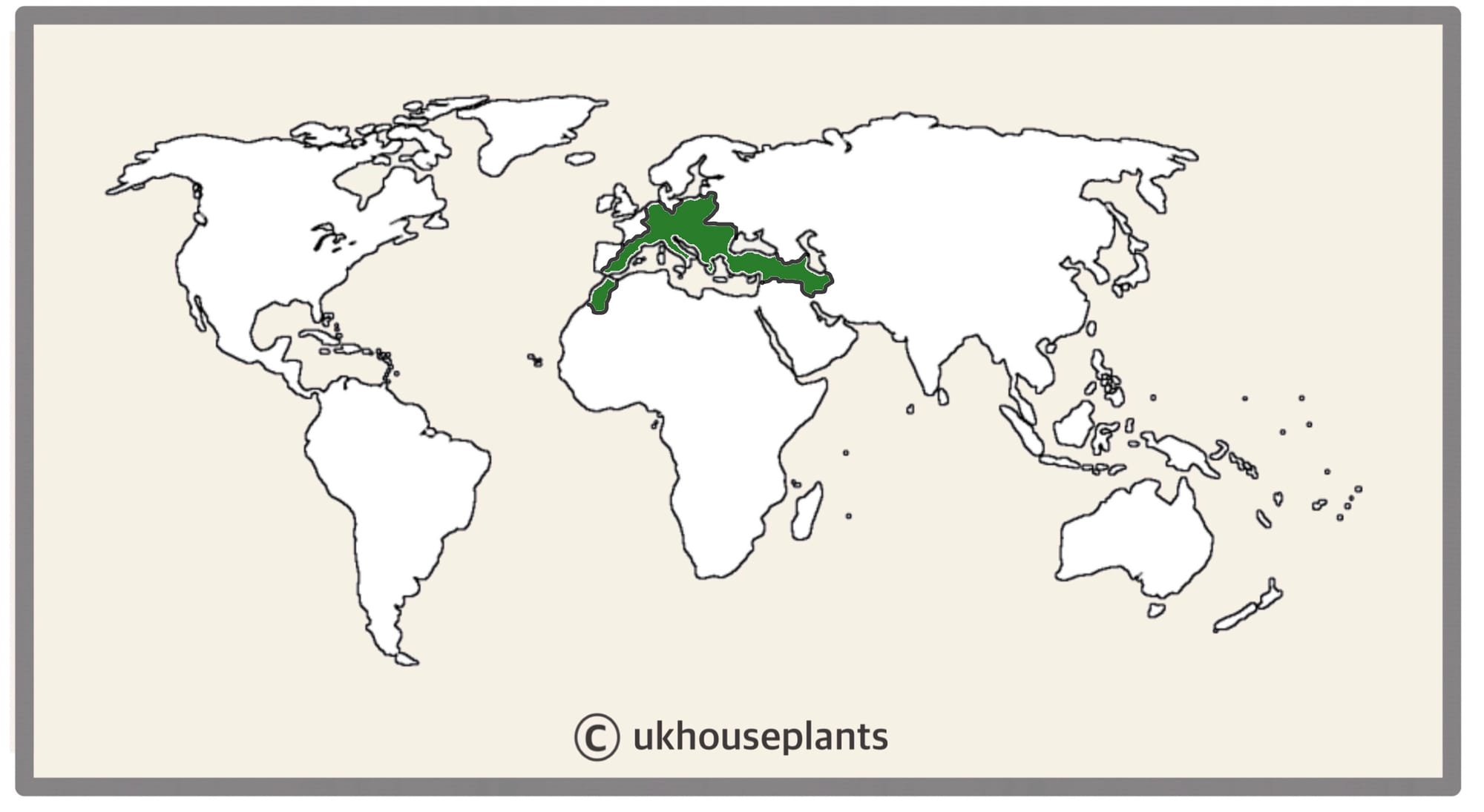 The Distribution of Sempervivum.
The Distribution of Sempervivum.
Temperature
-4° - 35°C (25° - 95°F)
H3 (Hardiness Zone 9) - Tolerate to temperatures below freezing. Although it can survive frosts and thin snow, refrain from bringing it indoors overnight if the room temperature is above 5℃ (40℉), as a sudden change in temperature may cause environmental shock with weakened spring growth and a lack of flowers over the season's course. Instead, either leave it outdoors or in an unheated conservatory, brightly lit garage or a greenhouse until the risk of frost has elapsed.
Spread
Up to 0.7m in height and 1m in width. The ultimate height varies greatly from one species to another but generally will take between 5 - 8 years to achieve.
Pruning & Maintenance
Remove yellow or dying leaves, and plant debris to encourage better-growing conditions. While pruning, always use clean utensils or shears to reduce the chance of bacterial and fungal diseases. Never cut through yellowed tissue as this may cause further damage in the likes of diseases or bacterial infections. Remember to make clean incisions as too-damaged wounds may shock the plant, causing weakened growth and a decline in health.
Propagation
Via seed or Offset Division.
Offset (Pup) Division - For this method, it's best to divide in spring or summer and once the offshoots are at least a quarter of the mother plant's size. Remove its pot and place your hand in between the junction that connects the two; soil may have to be brushed away to get a better grip. Gently push the pup downwards while supporting the mother plant until you hear a snap. Cautiously separate the root systems, keeping great care in keeping them damage-free. Place the new plantlet in a small pot with a well-draining potting mix, much similar to the original soil, and maintain the same care routines. 'Cactus & Succulent' compost is best, or you can make your own using multipurpose compost with added grit or perlite. Provide a bright setting with temperatures around 18°C (64°F) with the majority of the soil drying out in between waters. New leaves should emerge within the eight weeks, as long as the soil is kept on the drier to life.
Flowers
Pink or purple flowers are held by a spike that'll develop each year, reaching up to 50cm in height during the summer. Each flower can last up to several days, with the blooming process lasting several weeks. Ensure to keep the plant slightly more hydrated with a fortnightly feed of Cactus Feed during this time to prolong this period.
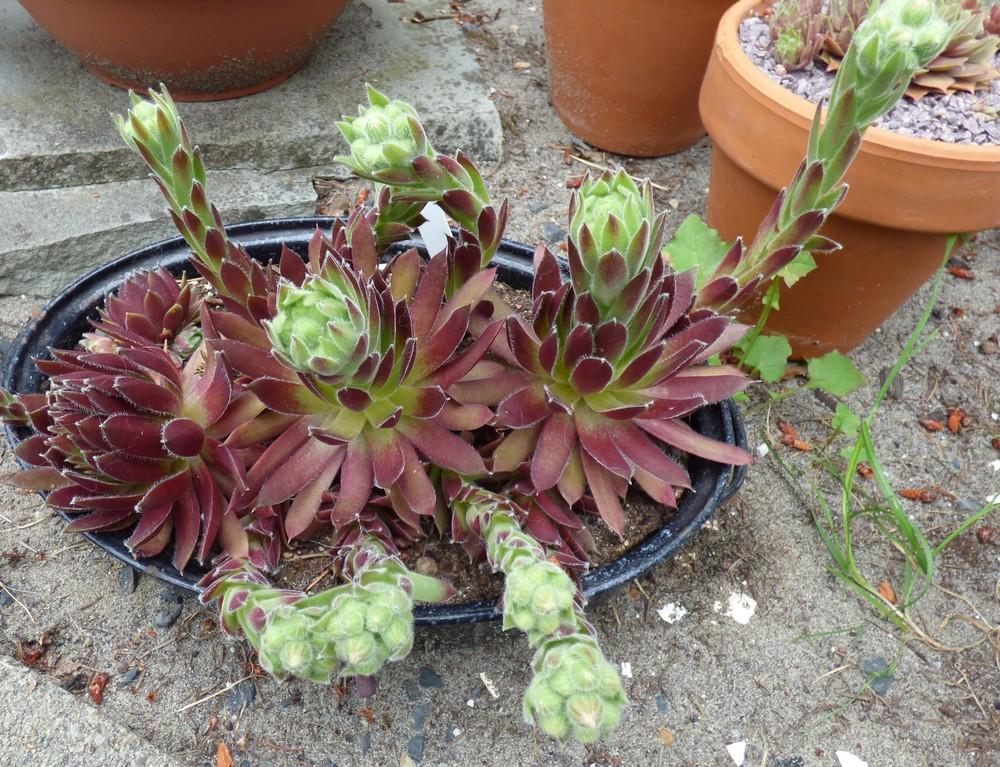 The developing bracts of a Sempervivum 'Strawberry Kiwi'. Copyright: The National Gardening Association.
The developing bracts of a Sempervivum 'Strawberry Kiwi'. Copyright: The National Gardening Association.
Repotting
Repot three years in the spring, using a 'Cactus & Succulent' labelled potting mix and the next sized pot with adequate drainage - both plastic and terracotta containers are suitable. Sempervivums are a 'family plant' and therefore the mother plant can happily grow with its pups for many years, even if this means over-filling the pot. They prefer to be potbound as this will downplay the risk of over-watering (& root rot), so only repot if necessary or if you're interested in propagating the offsets to expand your spiky collection.
Book a 1-to-1 video call with Joe Bagley if you'd like a personal guide to repotting your houseplant. This will include recommending the right branded-compost and pot size, followed by a live video call whilst you transplant the specimen for step-by-step guidance and answer any further questions!
Pests & Diseases
Keep an eye out for mealybugs, aphids, scale, whitefly, vine weevils & root mealybugs that'll locate themselves in the cubbyholes and undersides of the leaves, with the exception of the latter two in the soil. Common diseases associated with indoor Sempervivums are root rot, leaf-spot disease, botrytis, rust, powdery mildew & southern blight - click here to learn more about these issues.
Toxicity
Not known to be poisonous when consumed by pets and humans. If large quantities are eaten, it may result in vomiting, nausea and a loss of appetite.
Retail Locations
British Garden Centres, B&Q, Dobbies, Homebase, Independent Garden Centres or Nurseries & Online Stores.
Book a 1-to-1 Call with Joe Bagley
If you need further advice with your houseplants, book an advice call with ukhouseplants' friendly and expert writer today! This can be done via a video or audio call on most apps, including Facebook, FaceTime & Skype. A ten-minute call costs £5.99 (US$7), or £15.99 for thirty minutes. You can ask multiple questions, including queries on plants, pests, terrariums, repotting advice and anything in between. Please consider supporting this service to keep ukhouseplants thriving!